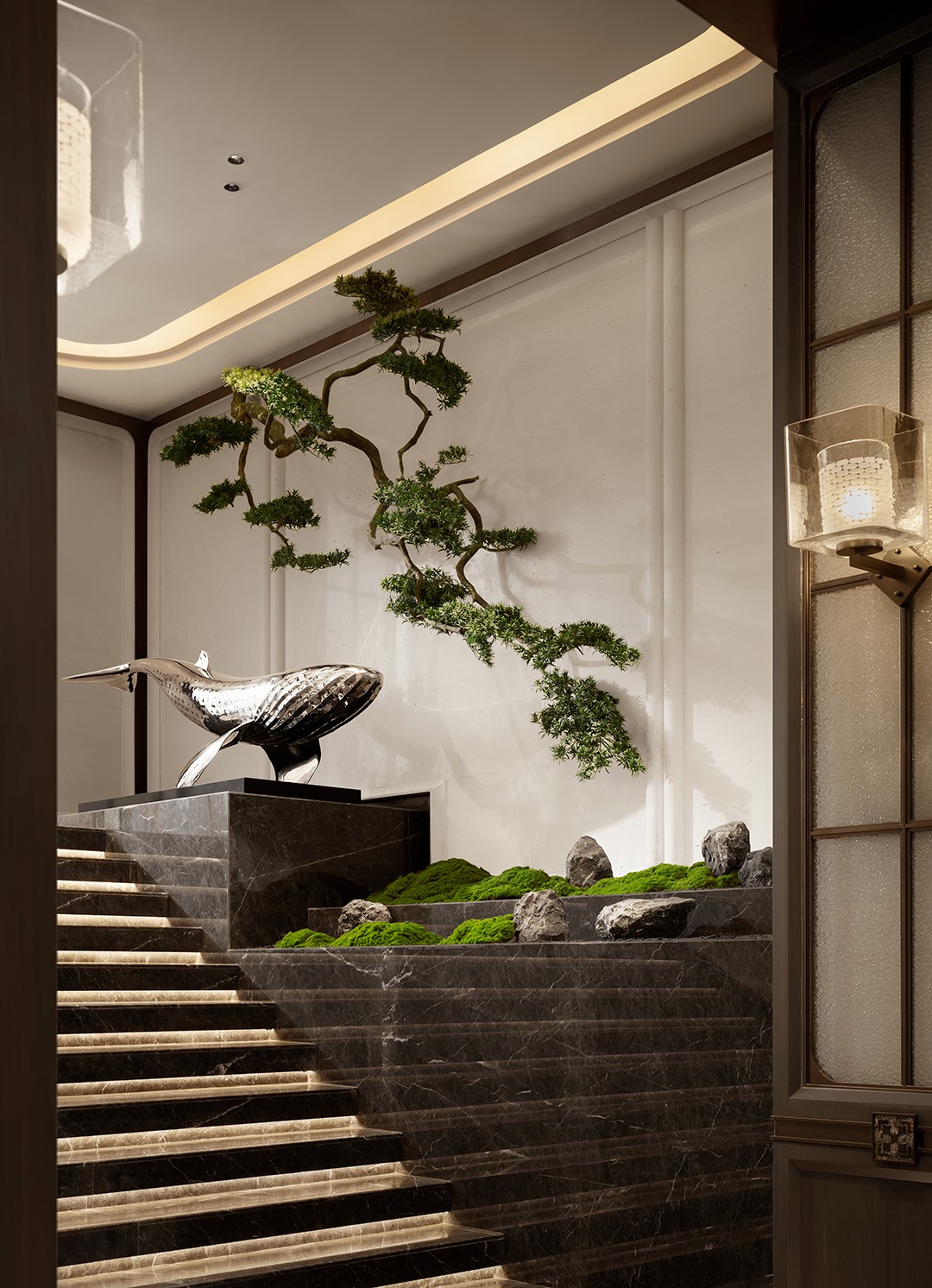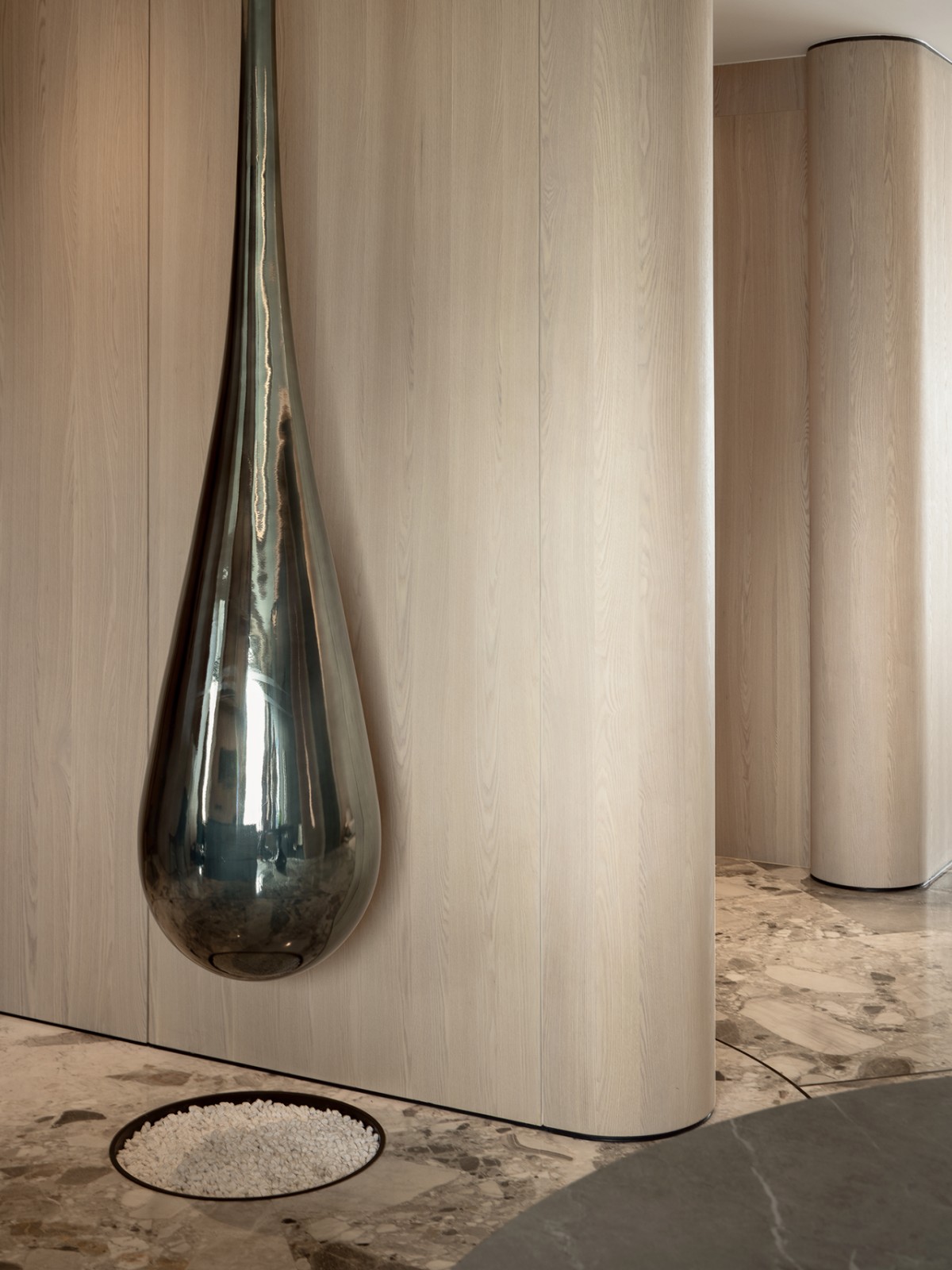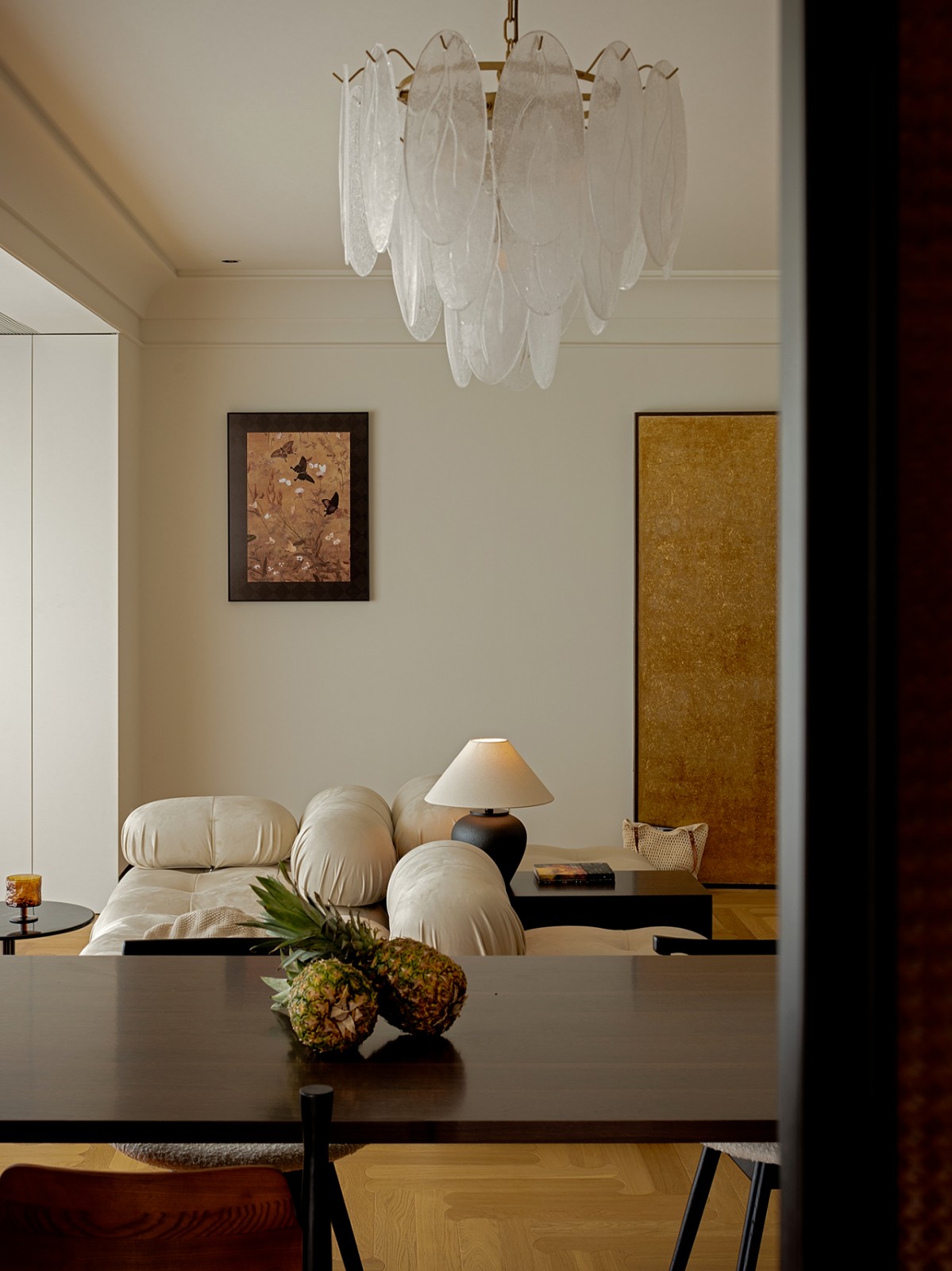Energy Positive Relocatable Classroom Anderson Anderson Architecture
2014-10-02 01:00
架构师提供的文本描述。夏威夷四分之一的学生目前在劣质的便携式教室学习。各州计划在未来十年内更换其中的1万台。
Text description provided by the architects. One in four students in Hawaii currently study in poor-quality portable classrooms. The states plans to replace 10,000 of these units over the next ten years.
这个工厂建造的能源积极的便携式教室提供了一个高性能、健康的教育环境,同时通过仔细的采光和自然通风将能源消耗降到最低,使用光伏电池板产生的能量比消耗的要多得多。教室也是一种教育工具,强调自然力量和系统,监测建筑性能,并向学生内部和网络广播。寿命周期成本预计低于上一代耗能便携设备。
This factory-built energy-positive portable classroom provides a high performance, healthy educational environment, while minimizing energy use through careful daylighting and natural ventilation, employing photovoltaic panels to generate substantially more power than consumed. The classroom also serves as an educational tool, with natural forces and systems highlighted, and building performance monitored and broadcast to students inside, as well as to the web. The life-cycle cost is projected lower than previous generation energy-consuming portables.
这个模块化的,场外制造的,可重新定位的教室原型是由夏威夷教育部委托作为一个新的模式,以取代本州目前的库存老化,质量差和能源效率低的便携式设备。该项目被授予一个设计-建设团队,基于非常详细的性能分析建模和30年生命周期成本分析。建筑系统包括向网络广播的广泛的环境监测系统。一个由国家资助的科学小组正在通过一项为期两年的研究来评估建筑的性能。根据科学结果和入伙后评估,将根据需要对该建筑进行修改,以便将其安置在全国各地众多变化极大的气候生态系统中。这种易于重新定位的建筑系统是在多种气候条件下设计的,具有灵活性和教室舒适性和能源效率的选择。在夏威夷的教育规划中,可重新安置的教室是一个主要的存在。
This modular, off-site fabricated, relocatable classroom prototype was commissioned by the Hawaii Department of Education as a new model to replace the state’s current inventory of aging, poor quality and energy inefficient portables. The project was competitively awarded to a design-build team based on highly detailed performance analysis modeling and thirty-year life cycle cost analyses. The building systems include extensive environmental monitoring systems broadcast to the web. A state-funded scientific team is evaluating the building performance through a two-year study. Based on scientific results and post-occupancy evaluation, the building will be revised as required for future units to be placed in numerous highly varied climate ecosystems throughout the state. The easily relocatable building system is designed with flexibility and options for classroom comfort and energy efficiency in a wide range of climate conditions. Relocatable classrooms are a major presence in Hawaii education planning.
便携式教室旨在为学生和教师提供一个优化的教育环境,同时在建筑和课堂学习中提出可持续的设计原则。该教室旨在保存、收集和产生自然资源,包括电能、日光、风能和雨水。除了强大、高效和保守外,自然力量和资源在整个结构中得到强调和暴露,所有系统和性能标准都受到监测并向网络传播。这座建筑是居住者、其他学校和公众的学习工具。最大光伏表面与低能耗相匹配的组合创造了一个积极的净能源生产,是建筑年消耗量的四倍。
The portable classroom is designed to provide an optimized educational environment for students and teachers while advancing sustainable design principles in construction and in classroom learning. The classroom is designed to conserve as well as collect and generates natural resources, including electrical energy, daylight, wind energy, and rainwater. As well as being strong, efficient and conserving, natural forces and resources are highlighted and exposed throughout the structure, and all systems and performance criteria are monitored and broadcast to the web. The building acts as a learning tool for occupants, other schools, and the general public. The combination of maximized photovoltaic surface matched with low energy consumption creates a positive net energy production that is four times the building’s annual consumption.
能源正面便携式教室优化光伏屋顶表面方向,自然遮阳北面日光玻璃,并调节自然通风。所有这些力量都与制造和运输效率、教室使用功能、低运营成本和易于维护的额外标准相平衡。生产和交付过程以及所使用的材料和产品都是为了最小的环境影响和对健康的室内环境的最大贡献而选择的。在可能的情况下,选择材料以节省资源,尽量减少初始和生命周期的维护费用,并提高对自然环境及其与舒适和健康生活的关系的教育意识。设计的重点是直接影响居住者学习经验和社区环境质量的性能问题-热舒适、自然采光、室内空气质量、能源和资源节约与发电。
The Energy Positive Portable Classroom optimizes photovoltaic roof surface orientation, naturally shaded north-facing daylight glazing, and modulated natural ventilation. All of these forces are balanced with the additional criteria of manufacturing and transport efficiency, functionality for classroom use, low operating costs and ease of maintenance. The manufacturing and delivery process, and the materials and products employed are all selected for minimum environmental impact and for maximum contribution to a healthy indoor environment. Wherever possible, materials are chosen to conserve resources, minimize initial and lifecycle maintenance costs, and to promote educational awareness of the natural environment and its relationship to comfortable and healthy living. The design focuses on performance issues directly impacting the learning experience of its occupants and the environmental quality of its community—thermal comfort, natural daylighting, indoor air quality, energy and resource conservation and generation.
该设计提供了良好的室内热,照明和声学性能的基础上,目前的研究优化学习环境。教室的设计目的是尽量减少热量的增加,并使用可利用的自然日光和自然通风,而不是空调。电气系统是为当代和未来的数字教学期望而设计的,用于根据外部天气条件对能源消耗和室内环境进行性能监测。监控是网络广播和格式化为一个儿童可访问的界面,让学生互动学习他们的直接环境和上下文的可持续性问题。这种网络广播数据与不同年龄组的课程相结合,并可公开查阅。建筑设计作为一种综合性的教学工具,对建筑的结构和性能要素进行了揭示和突出,使人们能够参照建筑的物理属性来理解数字数据。材料、系统和表面都是为健康的空气质量和全球可持续性而设计的。建筑是在能源和资源效率高的工厂完成的,采用模块化设计来促进未来在替代地点的重复使用,提高整个生命周期的最大可持续性。
The design provides excellent interior thermal, lighting and acoustic performance based on current research in optimized learning environments. The classroom is designed to minimize heat gain, and to use available natural daylight and natural ventilation rather than air-conditioning. Electrical systems are designed for contemporary and future digital teaching expectations, and for performance monitoring of energy consumption and interior environment charted against exterior weather conditions. Monitoring is web-broadcast and formatted as a child-accessible interface allowing students to interactively learn about their immediate environment and contextual sustainability issues. This web-broadcast data is integrated with curricula for various age groups and is publically accessible. As a comprehensive teaching tool, the building design exposes and highlights structural and performance components so that digital data is understood in reference to physical attributes of the construction. Materials, systems and surfaces are designed for healthy air quality and global sustainability. Construction is accomplished in an energy and resource-efficient factory, with a modular design facilitating future re-use on alternate sites, enhancing maximized sustainability throughout the life cycle.
该建筑采用三个易于运输的模块预制,降低了初始成本和能源,并促进了今后的高效搬迁和再利用,最大限度地减少了浪费。钢框架,钢和硬质泡沫,夹层板地板和屋顶系统尽量减少材料的使用;最大限度的绝缘和热反射;并阻止害虫和模具在无洞结构。一个简单的,双壁金属包层,加上金属屋顶的遮阳太阳能电池板以上的3“通风空气空间,创造了通风双层皮肤,大大减少热量的增长。所有的玻璃是可操作的,北面和/或遮阳,以防止直接阳光,并优化自然通风和舒适的气流。内表面是低VOC产品。暴露梁是FSC认证的胶合层合材,与钢桁架相结合,可以明显地追踪主要结构力。内部表面自然完成,低VOC材料提供良好的室内空气质量。采光分析表明,在大多数没有电照明的地方,整个典型的学校一天都能达到出色的工作照明水平。热舒适性分析表明,在大多数没有空调的高温气候下,教室将是舒适的,尽管在空气质量或噪音条件妨碍自然通风的学校,也可以使用高效的机械空调系统作为一种选择。
The building is prefabricated in three easily transportable modules, reducing initial cost and energy, and facilitating efficient relocation and reuse in the future, minimizing waste. A steel frame and steel and rigid foam, sandwich panel floor and roof system minimize material use; maximize insulation and heat reflection; and deter pests and mold in the cavity-free structure. A simple, double wall metal cladding, along with metal roofing shaded by solar panels above a 3” ventilated airspace, creates a ventilated double skin greatly reducing heat gain. All glazing is operable and north facing and/or shaded to prevent direct sunlight, and to optimize natural ventilation and comfortable airflow. Interior surfaces are low VOC products. Exposed beams are FSC certified glue-laminated timbers combined with steel trusses to visibly trace primary structural forces. Interior surfaces are naturally finished, low VOC materials to provide good interior air quality. Daylighting analysis indicates that excellent work light levels are achieved throughout the typical school day in most locations without electric lighting. Thermal comfort analysis indicates the classroom will be comfortable in most high heat climates without air conditioning, although an efficient mechanical air conditioning system is also available as an option for school sites where air quality or noise conditions preclude natural ventilation.
在间接采光和自然通风的同时,为太阳能电池板的最大曝光量优化了牧师的角度和间距。为了优化日光水平,窗户与外部铝制遮阳板直接遮阳。声阻尼对于室内体验是必不可少的,儿童学习和辨别口语的能力尤其受到背景声音水平和表面回声的影响。地板、墙壁和天花板系统以及所有机械和电气设备的设计都是为了限制声音的产生和抑制声音的混响。选择整个空间的表面、材料、视图、光线质量和颜色,不仅是为了健康、可持续性、功能性和卫生的易于维护,而且是为了提供活力、乐趣和创造性的灵感。能源效率和能源生产一直是这座建筑设计和建设的主要焦点,该建筑旨在彻底改变典型的耗能便携式教室的能源效率。
The angle and spacing of the clerestories is optimized for maximum solar exposure of the PV panels while facilitating indirect daylighting and natural ventilation. To optimize daylight levels, the windows are shaded from direct sun with exterior aluminum sunshades. Acoustical dampening is essential to interior experience, and children’s ability to learn and distinguish spoken language is especially affected by background sound levels and surface echo. Floor, wall and ceiling systems and all mechanical and electrical equipment are designed to limit sound generation and dampen sound reverberation. Surfaces, materials, views, light quality and colors throughout the space are selected not only for health, sustainability, functionality and hygienic ease of maintenance, but also to provide vibrancy, fun and creative inspiration. ENERGY EFFICIENCY and energy production has been a major focus of design and construction for this building, which is designed to revolutionize the energy efficiency of typically energy-hogging portable classrooms.
工厂建造的模块化建筑不仅可以在质量上与传统建筑媲美或优于传统建筑,而且控制制造过程大大减少了现场施工中典型的能源和材料浪费。模块化的建筑系统允许搬迁和未来的重复使用,而不需要典型的拆除和处置材料和嵌入式能源。高质量的窗户,遮阳设备和定向风铲,排气皮和高性能绝缘和密封减少热量的增加,减少能源浪费,污染和释放温室气体。优质白色橡胶屋顶和遮阳,低发射率玻璃和反射金属通风皮肤反映太阳热量从建筑物以外,以保持舒适,在炎热的天气,并减少附近的建筑物和室外空间的热岛变暖。使用感应器“学习”活动模式和优化设置,以节省能源和保持舒适的水平,适合日常使用周期。当房间内没有活动时,协调的传感器和照明系统的电子控制系统会关闭灯。屋顶表面的光伏阵列用通风空间遮住屋顶表面,产生的能量是教室所期望的能源需求的四倍,即使使用了大量的数字教学技术和建筑性能监测系统。
Factory built modular buildings can be not only equal to or superior to traditional buildings in quality, but the controlled manufacturing process greatly minimizes energy and material waste typical to site construction. Modularity of the construction system allows relocation and future re-use of the building without typical demolition and disposal waste of materials and embedded energy. High quality windows, shading devices and directed wind scoops, vented skins and high-performance insulation and sealants reduce heat gain, which reduces energy waste, pollution and release of greenhouse gasses. A high-quality white rubber roof and solar-shaded, low emissivity glazing and reflective metal ventilated skins reflect solar heat gain away from the building to keep it comfortable in hot weather and reduce heat-island warming of adjacent buildings and outdoor spaces. Occupancy sensors “learn” patterns of activity and optimize settings to conserve energy and maintain comfortable levels appropriate to daily cycles of use. Coordinated sensors and electronic control of the lighting system turn off lights when there is no activity in the room. The PV array on the roof surfaces shades the roof surface with a ventilation space below, and generates four times the energy demand expected in the classroom, even while using substantial digital teaching technology and building performance monitoring systems.
该建筑在BIM软件中进行了充分的开发,并在图形和定量环境分析软件中进行了建模和分析。与ASHRAE 90.1-2004有关的高绩效目标是由建筑和建筑团队内的LEED AP人员和建筑科学顾问制定和监测的。
The building was fully developed in BIM software and then modeled and analyzed in graphic and quantitative environmental analysis software. High performance goals in relation to ASHRAE 90.1-2004 were established and monitored by LEED AP personnel within the architecture and construction team and by building science consultants.
在设计、性能分析和监测方面,该团队与基于大学和工业的建筑科学咨询团队密切合作。这种规模的模块化、可搬迁建筑尚未列入LEED和高性能学校联盟等可持续发展认证方案,但作为基线项目规范,采用了CHP标准以及与LEED白金标准和评价做法相对应的最低标准。
The team worked closely with university and industry-based building science-consulting teams in the design and performance analysis and monitoring. Modular, relocatable buildings of this size are not yet included in sustainability certification programs such as LEED and Coalition for High Performance Schools, but the CHP standards and minimum equivalents to LEED Platinum standards and evaluation practices were applied as baseline project specifications.
Architects Anderson Anderson Architecture
Location Ewa Beach, HI, USA
Architect in Charge Mark Anderson, Peter Anderson
Project Manager Johnson Tang
Design Team Mark Anderson, Peter Anderson, Johnson Tang, Yevgeniy Ossipov, Gennifer Muñoz, Yingying Xue, Jia Wu, Chris Campbell, Brent Sumida, Matthias Steppuhn
Photographs Anthony Vizzari
 举报
举报
别默默的看了,快登录帮我评论一下吧!:)
注册
登录
更多评论
相关文章
-

描边风设计中,最容易犯的8种问题分析
2018年走过了四分之一,LOGO设计趋势也清晰了LOGO设计
-

描边风设计中,最容易犯的8种问题分析
2018年走过了四分之一,LOGO设计趋势也清晰了LOGO设计
-

描边风设计中,最容易犯的8种问题分析
2018年走过了四分之一,LOGO设计趋势也清晰了LOGO设计








































_photoshop.jpg)



























































